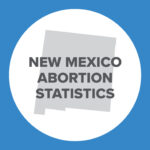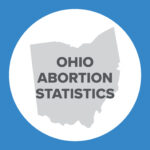Using Tax Policy to Fund Pro-Life Objectives: A Case Study in Mississippi

By Jameson Taylor, Ph.D.
This is Issue 79 in the On Point Series.
For decades, the pro-life movement has fought federal funding decisions that channel hundreds of millions of dollars to pro-abortion nonprofits each year. In response, state legislatures – Texas being a prominent example – have sought to appropriate funds to pro-life service providers. This approach was detailed in a February 2022 On Point paper, “Alternatives to Abortion Programs: Support for Mothers and Families.” Along with direct appropriations, states can use tax policy to support pro-life causes. In particular, tax credits provide a novel way of funding Pregnancy Resource Centers (PRCs). The benefit of such credits is that they depoliticize funding decisions, allowing donors to decide which groups to fund. In addition, tax credits offer a financial incentive for individuals and businesses while generating additional returns on public investment in pro-life and pro-family endeavors.
Tax Credits Encourage Charitable Giving
Federal and state governments have long used tax policy to encourage charitable giving. The federal tax code includes a charitable income tax deduction for itemizers, as well as a temporary (for 2021) deduction for non-itemizers who prefer the standard deduction. Many states (those that impose an income tax) offer similar deductions.
A tax deduction, however, is not nearly as valuable as a tax credit. A tax deduction allows for a reduction in taxable income. A tax credit allows for a direct reduction in the amount of taxes owed. A $1,000 deduction for a taxpayer in the 22 percent federal tax bracket would reduce that person’s tax bill by $220 whereas a $1,000 credit would reduce that person’s taxes by $1,000.
From a pro-life perspective, a perfect governmental funding system would result in no funds being appropriated to pro-abortion organizations and no tax deductions or credits going to donors who support these organizations. The second best – and more likely – arrangement would be a level playing field. That is not at all the case now. As indicated, groups like Planned Parenthood receive hundreds of millions of dollars each year from federal and state governments.
Given current political realities, policymakers can look to another model for funding nonprofits that serve mothers and families: tax credits for individual and business donors.
Mississippi: A Case Study in Pro-life Tax Policy
Mississippi has been much in the news, owing to the U.S. Supreme Court’s review of a 2018 law (HB 1510) prohibiting abortion after 15 weeks, a point at which an unborn child can feel pain. That same year, with less fanfare, Mississippi enacted a $1 million individual income tax credit program for donations to adoption agencies, foster care nonprofits and pregnancy resource centers. In 2019, the program was expanded and christened the “Children’s Promise Act.”
The Children’s Promise Act demonstrates the Mississippi Legislature’s concurrent commitment to protect life in the womb, as well as care for women and children. The program is still evolving and expanding but presents an instructive example of how tax policy can further pro-life objectives.
Mississippi’s 2018 law (HB 1566) is based on an Arizona program that provides an income tax credit to individuals who donate to an array of community service organizations. The Arizona program was established in 1997 as the “Working Poor Tax Credit,” restricted to certain itemized filers giving to “qualifying charitable organizations” (QCOs). The Legislature subsequently eliminated the itemization requirement, opening the credit up to all taxpayers. At that time, Arizona created a separate designation to encourage donations to “qualifying foster care charitable organizations” (QFCOs).
In 2016, Arizona expanded the program again to allow taxpayers to simultaneously benefit from the QCO and the QFCO credits, increasing the tax credit to $800 for married filers giving to a QCO and $1,000 for married filers giving to a QFCO. A QCO must spend at least half of its budget serving low-income individuals or chronically ill or physically disabled persons. A QFCO must spend at least half of its budget on services to children in foster care.
The current Arizona program thus allows married filers to claim up to $1,800 in tax credits for donations to eligible charitable organizations. Diverse nonprofits are participating local Boys & Girls Clubs, community food banks, Habitat for Humanity groups, and homeless shelters. Pregnancy resource centers and adoption agencies also benefit: Care Net Pregnancy Center of Cochise County, Christian Family Care, Community Pregnancy Center of Prescott, Crisis Pregnancy Centers of Greater Phoenix, to name a few. For the 2020 tax year, Arizona’s program distributed $77.4 million in credits claimed for QCOs and $23.8 million for QFCOs.
The Mississippi law passed in 2018 is based on this 2016 Arizona legislation; however, Mississippi lawmakers capped their program at $1 million. This last-minute amendment made the credit unworkable for the 2018 tax year.
For any tax credit program, limiting total revenue offsets requires forethought about how the state revenue/taxing agency will communicate with donors to guarantee funding is still available for the program. Other considerations – for instance, are funds to be distributed on a first-come, first-served basis or via a lottery? – must also be resolved. A programmatic cap likewise increases compliance and paperwork costs for donors, recipients, and oversight agencies.
The questions generated by how the $1 million cap would be enforced furnished a compelling reason to revisit Mississippi’s law in 2019. Instead of merely increasing the cap and adding implementation language, the Legislature reinvented the program altogether. In doing so, they created the Children’s Promise Act (HB 1613).
The Children’s Promise Act contains five legally distinct tax credits.
The first is an individual tax credit for donations to nonprofits serving children in foster care or at significant risk of entering foster care (QFCCOs). This credit is set at $1,000 (married filers) and $500 (single filers). This credit was authorized by the 2018 law. It is a dollar-for-dollar credit, meaning that if a taxpayer donates $1,000 to a foster care nonprofit, he will receive a $1,000 reduction in the amount of taxes owed.
The second is an individual tax credit for donations to nonprofits (QCOs) serving: 1) low-income residents; or 2) children with a chronic illness or disability. This credit is set at $800 (married) and $400 (single). This credit was also authorized by the 2018 legislation and is a dollar-for-dollar credit.
The third credit doubles Mississippi’s adoption tax credit from $2,500 to $5,000. This credit goes to adoptive parents.
The fourth credit is a business tax credit for donations made to foster care nonprofits (ECOs) directly working to: 1) divert children from foster care; 2) care for children in foster care; or 3) facilitate the adoption of children in foster care. This credit is a dollar-for-dollar credit.
The fifth credit is a business tax credit for donations made to nonprofits offering educational services (ESCOs) to: 1) children in foster care or at significant risk of entering foster care; 2) children with a chronic illness or disability; or 3) children eligible for free/reduced price meals. This credit is a dollar-for-dollar credit.
The two business credits may be claimed by a corporation, limited liability company, partnership or sole proprietorship. The credits are capped at 50 percent of the business entity’s tax liability and are allowed against income, insurance premium and ad valorem (property) taxes.
The 2019 program was initially capped at $5 million a year. It has since expanded to $18 million annually for the 2023 tax year.
As in Arizona, pregnancy resource centers serving low-income women and families are benefitting (under the QCO credit) from the Children’s Promise Act, and the program specifically excludes organizations that “provide, pay for or provide coverage of abortions.” For tax year 2021, the largest pregnancy center in Mississippi received at least $23,000. Foster care and adoption agencies (under the QFCCO credit) received at least $125,000 in funding for 2021. Total allocations to date for 2021 were just under $350,000.
Recall that Mississippi’s individual income tax credit is capped at $1 million. The cap has not been met in any year. Three factors may account for this underutilization. First of all, Mississippi is the poorest state in the country, home to a large number of taxpayers who pay no income tax at all. Second, Mississippi’s program requires taxpayers to pre-apply for the credit with one form and document the contribution on another form. For wealthier taxpayers, a $1,000 or $800 credit may not be worth the hassle. Third, individual taxpayers tend to be less informed about tax policy than business taxpayers. Even today, many individual taxpayers are surprised to learn they can earn a tax credit for donating to their favorite charity.
If we limited our evaluation of the Children’s Promise Act only to the individual income tax credit, the program would need improvement before serving as a guide for policymakers. But the really innovative feature of the Mississippi program is that it includes two business tax credits, which lawmakers in other states might find instructive as they seek to expand assistance for women and families.
Mississippi’s business tax credit program has hit its cap every year. Demand is so great that nonprofits host “application parties” to help donors submit their paperwork to the Department of Revenue seconds after the January 1 midnight launch each year. (Mississippi’s program uses a first-come, first-served application policy.)
The business credit has generated millions of dollars in donations to adoption agencies and foster care nonprofits around the state, with the median amount received being about $250,000 per organization for 2021.
Pregnancy resource centers, however, do not qualify for the Children’s Promise business tax credits. They are only eligible for smaller donations (capped at $800 each) by individual donors. In anticipation of the Supreme Court’s Dobbs decision, Mississippi Speaker of the House Philip Gunn sponsored legislation in 2022 that uses the Children’s Promise model to extend even more targeted support to mothers and children.
The resulting “Pregnancy Resource Act” (HB 1685) establishes an annual $3.5 million business tax credit for donations to pregnancy resource centers. The program offers a dollar-for-dollar credit set at 50 percent of the business entity’s tax burden. The credit may be taken against income, insurance premium, and ad valorem (property) taxes. Corporations, limited liability companies, partnerships and sole proprietorships are all eligible. No one PRC may receive more than 50 percent of the $3.5 million total.
Rather than requiring pregnancy centers to adhere to the fairly onerous certification process used under the Children’s Promise Act, PRCs in Mississippi automatically qualify for the tax credit if they receive funding through the state’s “Choose Life” specialty license plate program. PRCs are already vetted through this program, with 37 participating centers.
PRCs in Mississippi are currently serving more than 12,000 families and provided two million dollars in high-quality medical care and material assistance to women and children in 2019. The Pregnancy Resource Act will help PRCs significantly expand their outreach, especially as more women embrace life.
Conclusion
Just as tax codes and income levels differ, hitting upon the right mix of individual and business tax credits will be a little different in each state. In Arizona, the individual tax credit program is working very well. In Mississippi, the business tax credit is thriving. Even states with no individual income tax can use this model to help families and children. After evaluating Mississippi’s program, Florida passed the “Strong Families Tax Credit” in 2021. Florida does not levy a personal income tax. Thus, the Strong Families credit may be taken against corporate income, insurance premium, oil and gas production, and alcohol excise taxes. The primary purpose of the Florida program is to assist nonprofits striving to “prevent child abuse, neglect, abandonment, or exploitation” and to “assist fathers in learning and improving parenting skills.” The Florida tax credit is capped at $5 million a year.
Mississippi’s experience also demonstrates that even poor, rural, cash-strapped states can find a way to encourage charitable giving for nonprofits serving women and families. A small amount of foregone revenue can go a long way. By generating private investment in the public welfare, tax credits foster cooperation between private and public actors so as to maximize the resources of both. Such cooperation will surely be necessary to address the systemic societal problems – fatherlessness, abandonment and family breakdown – America is facing. No doubt, approaching these problems with effective life- and person-affirming solutions, instead of the blunt and barbaric instrument of abortion, is what will ultimately decide our future as a country. Tax credits like Mississippi’s Children’s Promise Act and Pregnancy Resource Act are promising tools states can use to help sustain this effort.
Appendix: Addressing Two Objections to Tax Credits
Taxes are necessary for government to function but are also a powerful policy instrument to be used with care. It’s thus worth mentioning two objections sometimes voiced against using tax credits to encourage charitable giving. Some argue that targeted tax credits make it more difficult to reduce everyone’s overall tax burden. From the other side of the spectrum, some prefer that the government decide who benefits from appropriated revenue. A properly designed tax credit can address both of these concerns. In addition, tax credits offer several advantages over other public mechanisms for funding pro-life and pro-family work.
First, tax credits come with fewer governmental strings attached. This does not mean no strings are attached, as there are usually certification requirements for participating nonprofits. These requirements, though, are far less burdensome than the reporting and oversight conditions that properly accompany direct government grants. In the case of tax credits, accountability obligations still exist, but they are outsourced, so to speak, to individual donors, who often care deeply about how their money is spent.
Second, the courts have consistently favored tax credits over direct appropriations, as regards First Amendment and Establishment Clause challenges (cf. Mueller v. Allen (1983) and Espinoza v. Montana (2020)). As explained by the Arizona Supreme Court in upholding an educational tax credit program: “Deductions and credits are legitimate tools by which government can ameliorate the tax burden while implementing social and economic goals.”
A third advantage of tax credits is that they facilitate a more democratic, consumer-driven approach to choosing winners and losers in the nonprofit marketplace. Instead of leaving funding decisions to elected representatives or agency bureaucrats – whose motives are not always transparent – tax credits enable individual donors to freely decide which organizations to support. In this open competition, groups able to convince the public that they are working on effective solutions are likely to obtain more funding.
In addition, tax credits can serve as a catalyst for reducing government spending or freeing up funding for other purposes. This is because tax credits encourage additional private investment. According to the National Council of Nonprofits, tax incentives for charitable giving generate as much as a 5 to 1 return on forgone revenue. The reason for this has to do with the nature of charitable giving. People have a greater personal connection to the causes they hold dear than they do to the taxing arm of the government. A person who writes a check to a local pregnancy center – even if only to obtain a tax credit – is more likely to accept an invitation to take a tour or attend a pro-life banquet. By contrast, no one who writes a check to the Internal Revenue Service wants to be invited over for a chat.
Tax credit programs can also be designed to provide for revenue predictability by anticipating and capping forgone revenue. Arizona caps their program by limiting individual income tax credits to donations of $1,000 and $800. Another option is to cap such programs based on a percentage of tax liability (25 percent, 50 percent, etc.). Mississippi and Florida both employ a comprehensive annual cap.
Finally, tax credits can be designed to advantage taxpayers from diverse socioeconomic classes: in particular, both itemizers and non-itemizers (who generally earn less). A well-crafted business tax credit will likewise be accessible to businesses of all sizes and kinds, ranging from corporations to sole proprietorships.
Dr. Jameson Taylor is the president and CEO of the Center for Political Renewal (CPR). He helped draft the Mississippi law now before the U.S. Supreme Court and led the coalition to get it passed. He is also the architect of the Children’s Promise Act and the Pregnancy Resource Act.

























